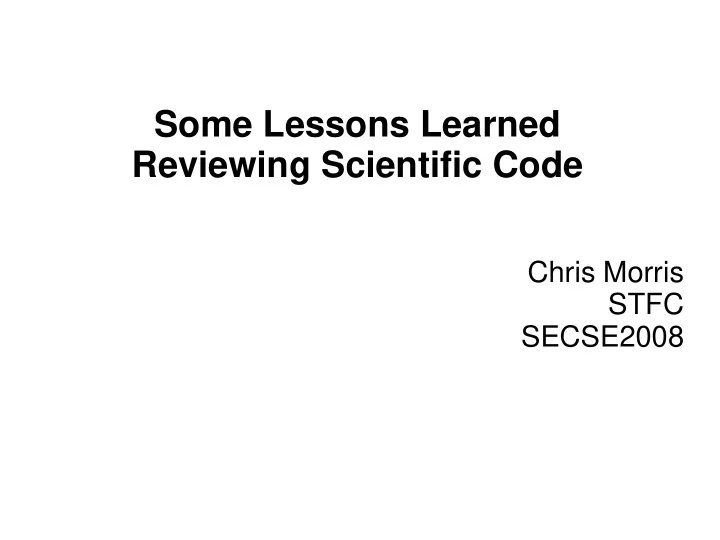

Some Lessons Learned Reviewing Scientific Code Chris Morris STFC SECSE2008
Nearly silent error handling ServerThread() { .... try { .... } catch (IOException ex) { ex.printStaceTrace(); } // what postcondition? }
Hypothesis: Lack of error handling is characteristic of scientific end-user code This defect also found in commercial code Must define “professional software developer” - risk of a circular argument
Testability NPATH complexity of one method: 770,943,744,005,163,750,045 Lack of testing is characteristic of the end-user scientific coding process System validation may be impractical Unit testing is not attempted Static analysers not used Never seen a job advert for a tester
Poor use of OO “An example of a class with a lot of duplicate code is [...], which has lines copied from (or to) five other classes.” Fifteen per cent of [...] is lines that have been copied and pasted. [...] has 28 blocks of 100 or more lines that have been copied and pasted. 70% of classes have DIT of 0 or 1. Also unfamiliar with transactions, postconditions.
No explicit quality goals None of the projects reviewed had a written quality policy Appropriate quality goals may not be obvious SCHED: robustness EXP: recoverability LIMS: reliability
Other findings Circular dependencies – no process to preserve architecture Numerical stability Review process encourages reflection: traceability from process deficiencies to code defects
Proof of Concept coding Goal to show feasibility, not make shrink-wrap product Defects matter only if fundamental Most SE processes inappropriate This is the formative experience of scientific end-user programmers But: 2008's prototype may be 2015's clinical application
Senior Codes Long-lived, many KLOC, Fortran, HPC, physics simulations Refutable hypotheses: - the model implemented is the one in the theory document - the solution method is convergent Possible to make unit tests SE techniques and tools not fully appropriate
Recommend
More recommend